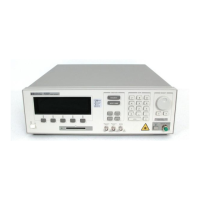4
Some Notes about Programming and Syntax Diagram
Conventions
A program message is a message containing commands or queries that you send
to the tunable laser source. The following are a few points about program
messages:
You can use either upper-case or lower-case characters.
You can send several commands in a single message. Each command must be
separated from the next one by a semicolon (;).
You end a program message with a line feed (LF) character, or any character
sent with End-Or-Identify (EOI).
You can use any valid number/unit combination.
Example
1500nm, 1.5
m and 1.5e-6m are all equivalent.
If you do not specify a unit, then the default unit is assumed. The default
unit for the commands are given with command description in the next
chapter.
Short Form and Long Form
The instrument accepts messages in short or long forms
.For example, the
message
:STATUS:OPERATION:ENABLE 768
is in long form, the short form of this
message is
:STAT:OPER:ENAB 768
.
In this manual the messages are written in a combination of upper and lower
case. Upper case characters are used for the short form of the message.For
example, the above command would be written
:STATus:OPERation:ENABle
.
The rst colon can be left out for the rst command or query in your message.
That is, the example given above could also be sent as
STAT:OPER:ENAB 768
.
Command and Query Syntax
All characters not between angled brackets must be sent exactly as shown.
The characters between angled brackets (
<
...
>
) indicate the kind of data that
you should send, or that you get in a response.You do not type the angled
brackets in the actual message. Descriptions of these items follow the syntax
description. The most common of these are:
Remote Operation 4-5

